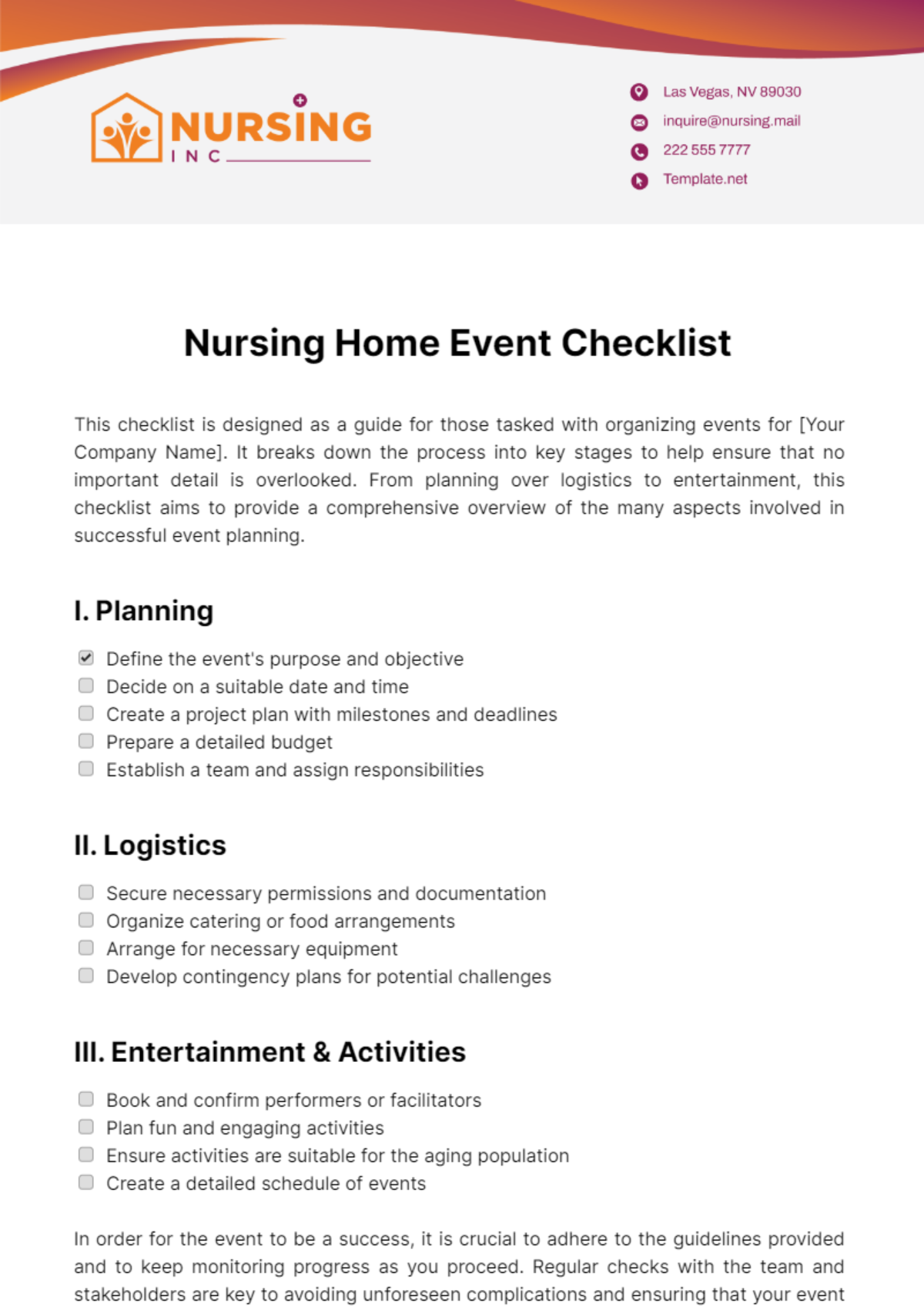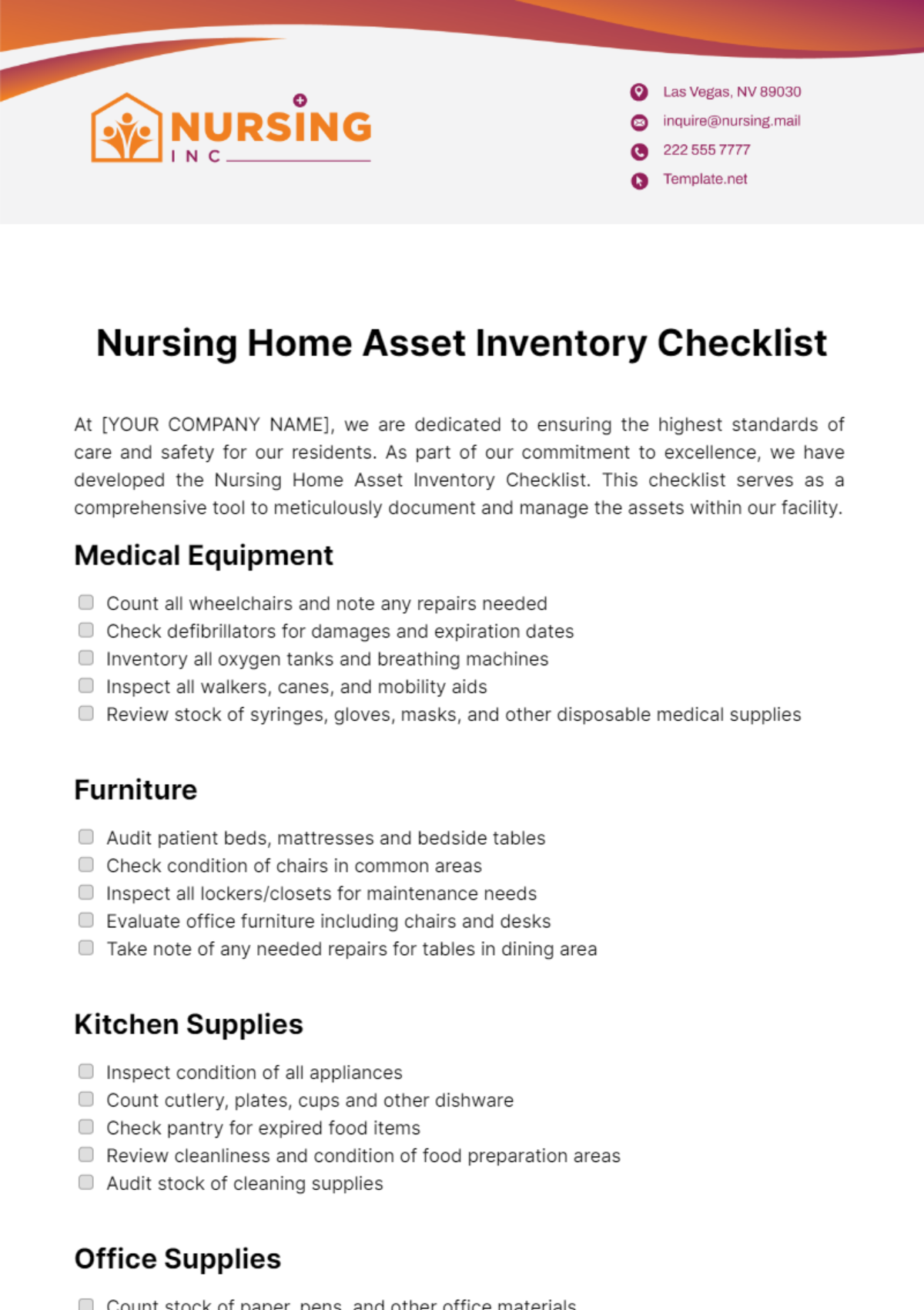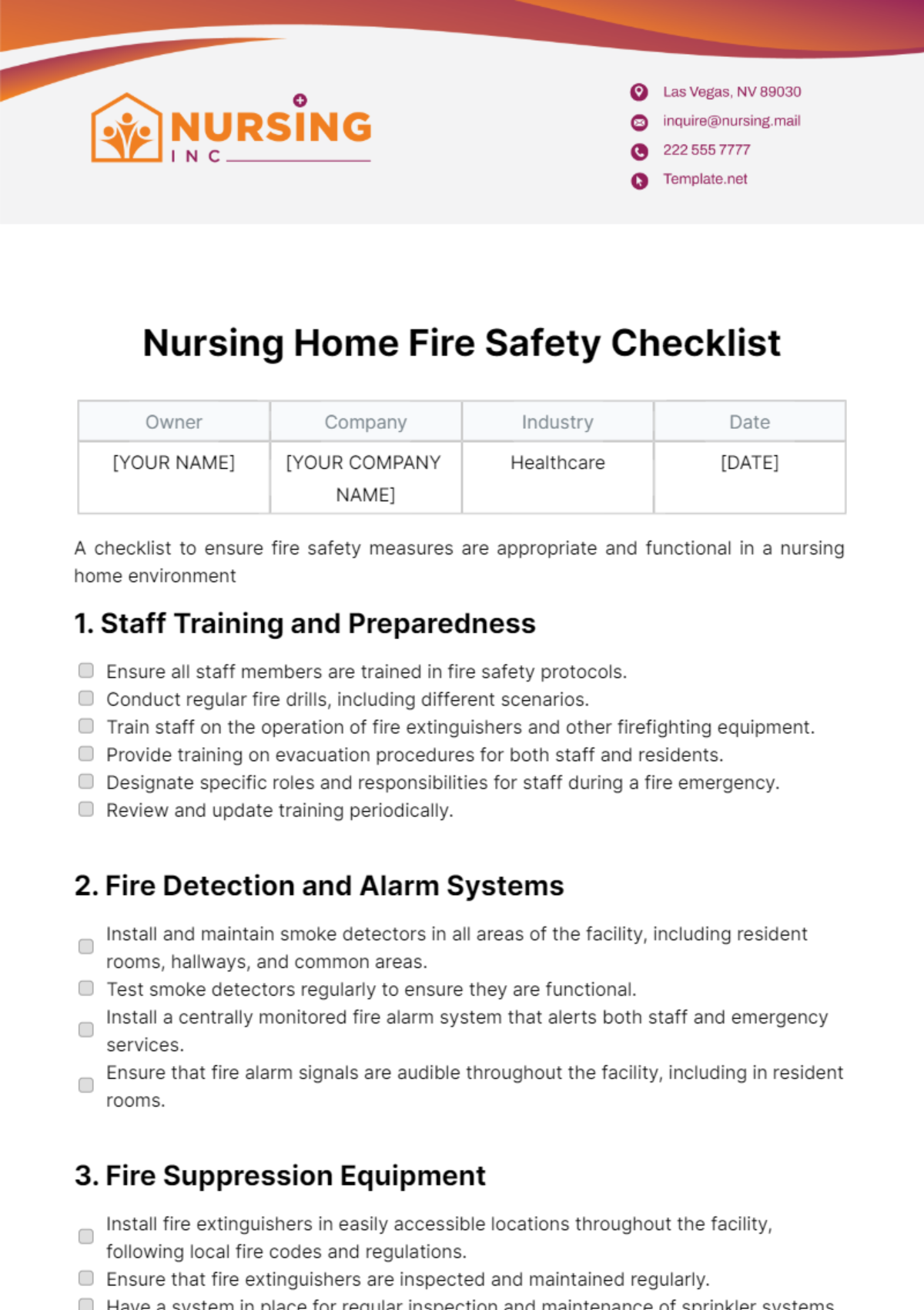Nursing Home Risk
Management Checklist
This checklist is designed to identify and mitigate risks in our facility on a quarterly basis, ensuring a safe environment for residents and staff. All department heads are responsible for implementing and monitoring their sections, with findings to be reported and addressed promptly.
Resident Safety
Fall Prevention: Ensure that fall prevention measures are in place and effective, including grab bars, non-slip flooring, and personal alarms for high-risk residents.
Medication Safety: Confirm that medication management protocols are strictly followed, with double-checks on dosages and adherence to prescriptions.
Infection Control: Regularly review and enforce infection control procedures, including hand hygiene, sanitation practices, and isolation protocols when necessary.
Emergency Preparedness: Validate the readiness of emergency equipment and the staff's familiarity with evacuation plans and emergency procedures.
Staff Safety
Training and Competency: Verify that all staff members have received up-to-date training on workplace safety, including handling of hazardous materials and emergency response.
Incident Reporting: Review the process for reporting and investigating incidents or near misses, ensuring it is straightforward and that follow-up actions are taken to prevent recurrence.
Personal Protective Equipment (PPE): Check that adequate PPE is available and used correctly by staff in accordance with the latest guidelines.
Staff Wellness Programs: Assess the availability and utilization of staff wellness programs to prevent burnout and support mental health.
Facility Maintenance
Building Safety: Conduct regular inspections of the facility to identify and remedy potential hazards, such as structural issues, electrical faults, and unsafe storage practices.
Fire Safety: Ensure that fire safety measures are up to date, including working smoke detectors, fire extinguishers, and clear, unobstructed evacuation routes.
Environmental Hazards: Monitor for environmental hazards, including air quality, water safety, and potential chemical exposures, taking corrective actions as needed.
Security Measures: Evaluate the effectiveness of security measures, including access controls, surveillance systems, and visitor screening processes.
Compliance and Legal Risks
Regulatory Compliance: Regularly review compliance with all applicable health care regulations, including resident care standards, privacy laws, and labor regulations.
Legal Documentation: Ensure that all legal documents, including contracts, consents, and resident records, are complete, up-to-date, and securely stored.
Risk Assessments: Conduct comprehensive risk assessments to identify potential legal and compliance risks, developing action plans to address identified issues.
Insurance Coverage: Review insurance policies to ensure adequate coverage is in place for liability, property, and other potential risks.
Financial Stability
Budget Management: Monitor budget adherence, identifying and addressing any significant variances in revenue or expenses.
Investment in Safety: Assess the allocation of financial resources to safety improvements and risk management initiatives, ensuring it is sufficient and effective.
Billing Practices: Regularly review billing practices for accuracy and compliance with insurance and governmental reimbursement policies.
Financial Risk Assessments: Perform financial risk assessments to anticipate and plan for potential financial challenges, including changes in funding sources and market conditions.

















































